The short answers are that you need to fill up fixed spool reels, fly reels and most baitcasters just about up to their spool capacity. However, there are exceptions (and also some special tricks) for each different style of reel. Those things are covered in the main article…
If you’re not sure how much fishing line on a reel is the right amount – then we’ve got you covered here at Fishing Discoveries. Below you’ll find the answers for spinning reels, baitcasting reels, fly fishing reels, centrepin/trotting reels and even ultralight baitcasters for Bait Finesse System fishing.
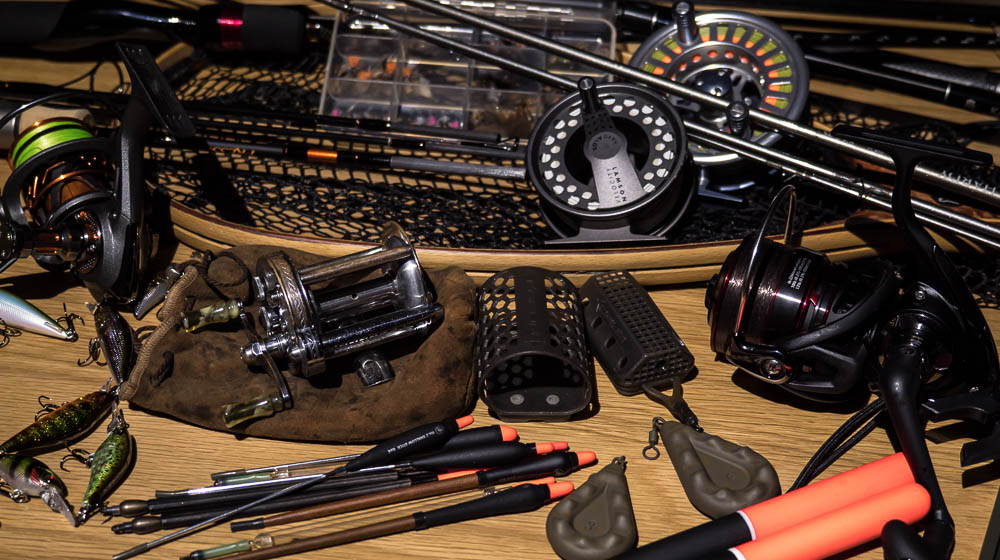
The right amount of line varies with each style of fishing
Why is the amount of line you put on a reel important?
Although the answer to what is, exactly, the right amount will vary for different reels – there are lots of common problems to getting it wrong. A major, and obvious one, is that the wrong amount of line will severely limit your casting distance. It also commonly creates more tangles.
At best tangled line wastes your precious fishing time. It might even cause lost fish through coiled line tangling and jamming your reel (or snagging in the line guides on your rod).
First of all though, See The Arbor Knot and/or Round-loop Uni Knot instructions in the "Best Ways of Attaching Line" Section of This Article (works for all reel types). That way, you'll know how to actually attach the line to your spool - which is an essential part of this puzzle.
How much Fishing Line on a Reel: Fixed Spool or Spinning Reel
The answer to how much line on a reel when you’re using a fixed-spool reel can be slightly different between very advanced distance-casting methods (e.g. for carp or shore fishing) compared to “normal methods”. However, the overall effect that you’re aiming for is the same.
For “regular use”, you want the amount of line on your spool to be just a tiny bit less than level with the outer front-edge of the spool (see line on the photo below):

Here there is just a small "lip" of spool left - even after the rig has been cast out
On the most basic level, you want to minimise the resistance of the line coils leaving the spool. At the same time, you don’t want the spool to be overflowing with line.
Loose coils of line just spilling off uncontrollably are a recipe for huge tangles.
The reason that an underfilled spool on a spinning or any "fixed spool" reel restricts casting distance is the friction created by a sharp angle between line and the lip of the spool.
For advanced casting applications you can benefit from filling the spool (and checking it with a straight-edged ruler) so that it is filled to EXACTLY the level of the lip of the spool. That way, you make sure that there is minimal friction and resistance for a larger proportion of your cast. Obviously, as more line peels off the spool, the resistance will increase as the spool empties.

The sharper the angle (circled in red) the line makes with the spool lip - the more friction (and the more it reduces casting distance)
The reason for very slightly underfilling the spool for “regular” applications is that your casting distance won’t suffer too much. Equally, there is less risk of any slight slackening of the line to cause loops of line to jump off the spool and become tangled.
Getting the amount of line exactly right means that you’ll avoid tangles while also being able to increase casting distance (or reduce casting weight to achieve the same distance).
It takes a lot of light line to fill a spool
There are some tricks worth knowing when it comes to loading up the right amount of low-diameter light line on a fixed spool reel. First of all, check whether your reel comes supplied with a shallow spool. This can save a lot of effort (and money spent on line!) for you to be able to fill your spool.
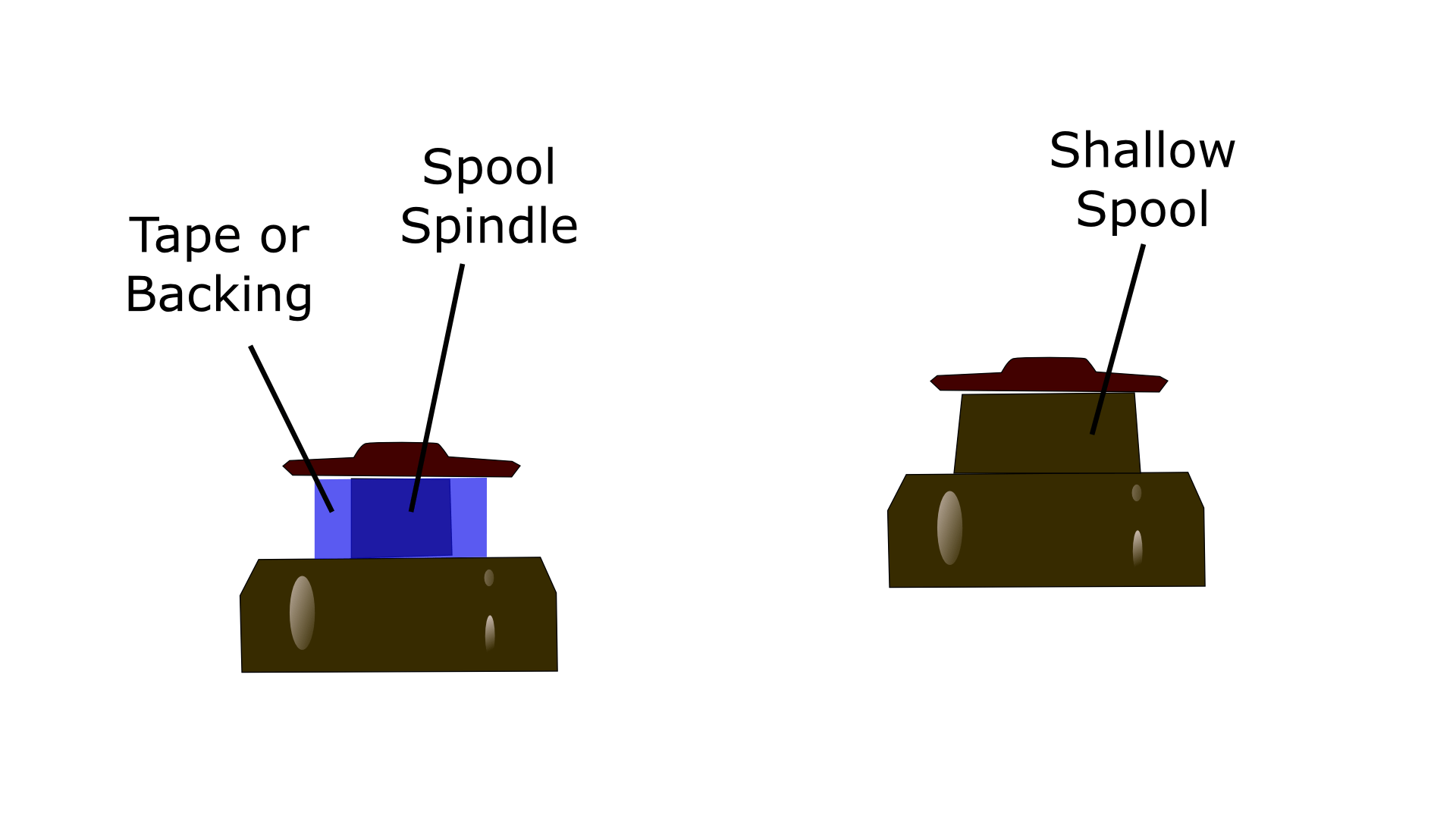
Bulking out the spool (left) or buying a custom-designed shallow spool (right)
If you don’t have a shallow spool (and you want to fish fine line), you will need to “bulk out” the spool. One way of doing this is to fill the reel up to a certain point using much heavier/larger-diameter line. You can even do the same thing by wrapping electrician’s tape to fill up the spool (the effect of both shown above). When your spool just has enough space left to accommodate your fine line, you can wind on the line you actually intend to fish with.
Standard Baitcasting Reel
For most, standard baitcasting reel applications (i.e. everything that isn't ultralight "BFS" style fishing), you'll want to fill between 80% and 95% of the capacity of the spool with line. It's pretty obvious that, if you overfill a baitcaster, the line is going to rub up against the body components of the reel - and cause all kinds of problems.
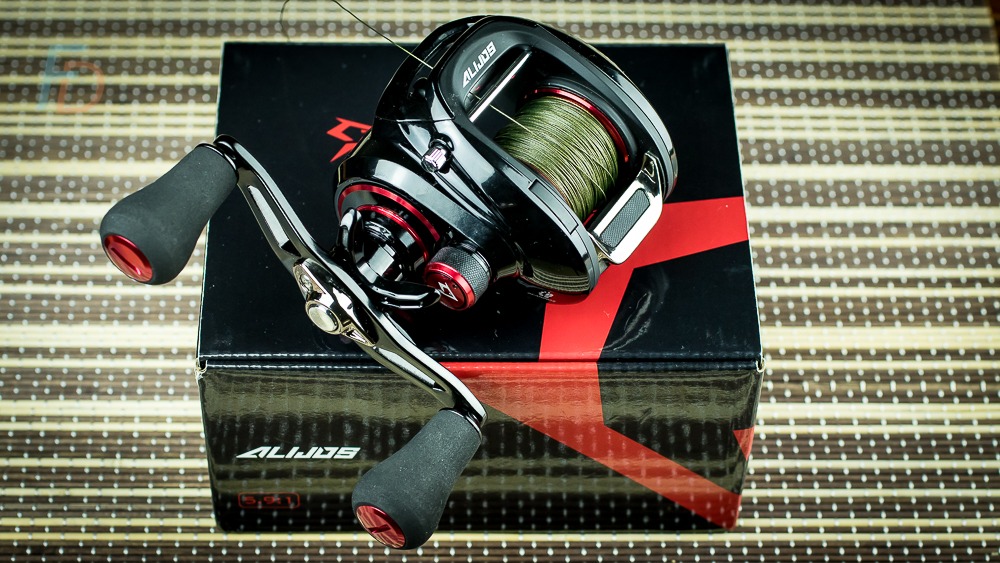
Still some of the spool rim showing - but not too much!
Putting the right amount of line on your baitcaster helps give you good, tangle free casting, avoid losing fish AND the proper amount of line recovery length per handle-turn when reeling. Here's why:
How much fishing line on a reel: Problems for too little line on a baitcaster
Bonus Tactics...
Once you've got your baitcaster spooled up correctly, there's a few things you can do to stack the odds in your favor. I've pulled together some of my favourite "unfair advantage" knowledge and turned it into a free e-book as a subscriber bonus. It needed a catchy title - so the idea of downloading this and then being able to switch into "Fishing-god Mode" at any time made me smile...
Just Click Here or on the Book Image/Button below to register for your Free Copy - plus 5 more fishing secrets via email:
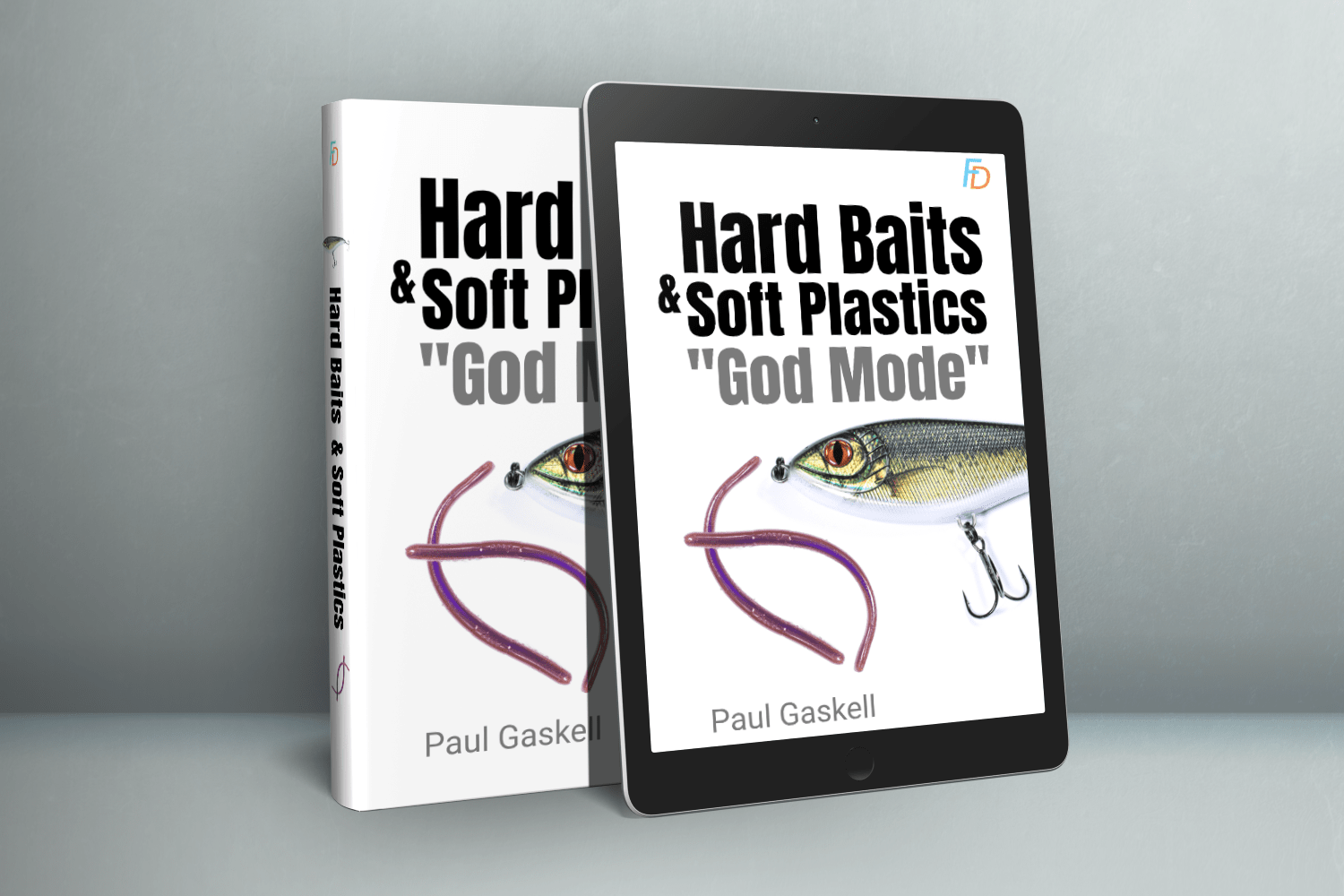
How Much Fishing Line on a Reel: Adapting Advice for Bait Finesse System (BFS) Spools
Bait Finesse System reels have special shallow spools that keep a large diameter, while being as light as possible. That avoids the problems of reduced line-recovery and coil memory - even with little line on the spool.
The reason you don't want lots of line on a BFS reel is that the aim of the game is to throw the lightest lures that you're able to fish on a baitcaster. If the spool is too heavy, then the inertia that your light lure needs to overcome to start the spool turning is too high.Spools are actually “ported” to minimise weight.

Shallow, Ported Ultralight Spool on the Fishband Clamber Hyper Micro CR-HM06
Adding way too much line has all the problems of a regular baitcaster (in terms of causing the spool to rub). Even adding a bit too much line can create the problem of increasing the weight and inertia of the spool to the point it harms your casting ability. At the same time, you still need to balance that against how much line you might need to land a fish...

Winding line through a line tally counter is an easy way to add exactly the length of line you wish to a BFS reel
A common guideline (given the short, accurate casts used in typical BFS fishing) for ultimate performance is to add around 50m of (fine-diameter) line. You are usually casting less than 30m and targeting fish of a size that will not run for 20m when hooked.
BFS Special Case with Larger Fish
If you expect larger fish, choose a stock spool that is a little heavier/stronger than the most radically ultralight option. Whatever spool you have, make sure that your drag is set fairly loose (it is easy to crush many BFS spools) and never pull for a break when snagged by yanking against the reel drag (wrap line around your hand instead).
You'll probably want to fill the spool a little closer to the rim (maybe 80 to 90% of max capacity) to cope with the runs of powerful fish and choose a line with a breaking strain appropriate to the fish you're targeting (and the terrain you're fishing).

Kevin Mai shows what's possible with a Shimano Calcutta Conquest BFS HG, properly loaded with the right line
In these situations, you will probably be casting lures that are a bit larger/heavier than the most radically tiny/ultralight examples. That means there's less need for keeping total spool weight and line-weight down.
How much Backing and Fly Line do I need when Fly Fishing?
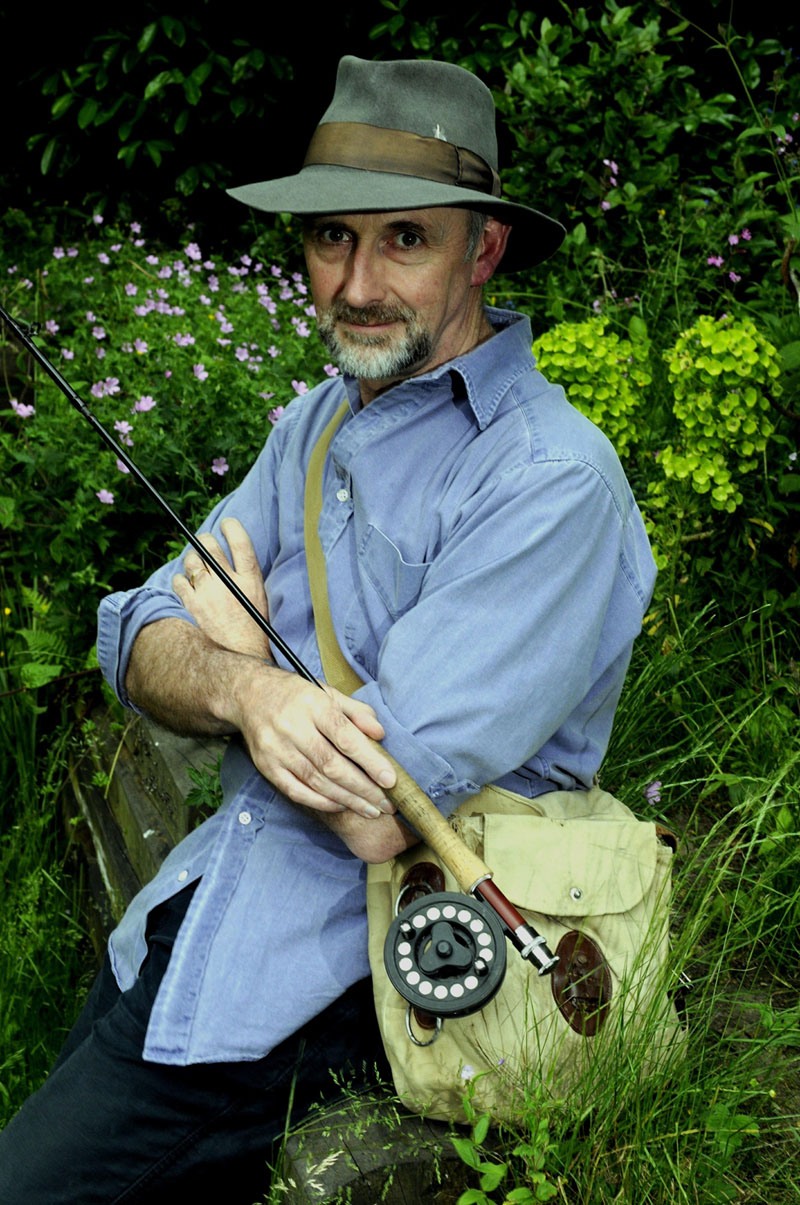
Luke Jennings (Author of Killing Eve and Blood Knots) in Fly Fishing Mode Pic: STUART CLARKE
Deciding how much fishing line on a reel when fly fishing is actually really similar to the Standard Baitcasting Reel above.
In other words:
The very best way is to add the fly line first, then add the perfect amount of backing (so that it is JUST less than the amount that would start rubbing on the reel body); before stripping everything off the spool and reversing the whole fly line and backing.
In other words, after you've stripped the backing line off and the fly line off, add your (now measured-length) backing first...Then attach to your fly line by your preferred knot and wind your fly line on top of your backing.
Make sure to wind the handle away from you at the top of the stroke and towards you on the bottom of the stroke (otherwise the drag doesn’t work – i.e. you’d be winding against the drag and the fish will run against the clicker only). See diagram:

Whether set up for left hand or right hand reeling, you need to wind a fly fishing reel so that the line appears from the lower edge of the rim
There is no reliable formula to predict how many yards of backing of a particular diameter, because of the complex relationship between spool diameter, spool width and variable diameter of a fly line throughout its length…so the diameter increase per turn and length of line per turn both vary as line fills the spool.
What about Centrepin Trotting Reels?
This case is a little bit like the considerations you have for BFS fishing. The spool on a centrepin is deliberately shallow. That keeps up a high retrieve rate of line per turn of the spool. It also avoids coil-memory.
That larger diameter also requires less force from the current to make the spool turn and pay out line (I understand it creates a greater "moment of force", compared to a point closer to the centre of the spindle).
In another similarlity to BFS, the lighter you keep your spool, the more easily it will turn - so there is an advantage to minimising the amount you put on the spool:
A simple guide for centrepins might be to poke the stem of a typical float that you intend to use into some soft ground, attach your line to it (from the end the spool it is supplied on) and then walk backwards.
When you get to the point that it's difficult to see your float well, then that's roughly the length of line you should put on your centrepin reel. So you can attach that to your reel, spool and then wind it up as you walk back to your float is sticking out of the ground.
You should allow a few yards/metres extra to make sure that there's still a few turns of line on your spool when you reach full range. Unless you are trotting for barbel or steelhead, you don't need to allow too much extra line for a running fish.
In fact, because you are typically using nylon monofilament line. there will be substantial stretch when you hook a fish at full-range.
Figures of between 20% and 30% stretch are quoted for monofilament lines...so for 30-m of line you could be looking at up to around 9m of stretch...
How Much Fishing Line on a Reel: Roundup
For all the examples above, the right answer for you (and your fishing) comes down to understanding the effect and function that you want your reel to create. Then, work backwards from that - while understanding what creates the limits of "Too Much" and "Too Little", depending on the casting, retrieving and (tangle-free) fish-playing requirements.
Hopefully the guidance and "starting suggestions" given above help you get going. At the same time, it should encourage you to think about the reasons WHY the advice is given. Once you understand those reasons, you'll be in the best position to design your own correct answer to the question How Much Line on a Fishing Reel?
Paul

[…] https://fishingdiscoveries.com/how-much-fishing-line-on-a-reel/ […]
[…] How Much Fishing Line on a Reel? How to Get it Right & What to Avoid […]
[…] How Much Fishing Line on a Reel? How to Get it Right & What to Avoid […]
[…] How Much Fishing Line on a Reel? How to Get it Right & What to Avoid […]
[…] How Much Fishing Line on a Reel? How to Get it Right & What to Avoid […]
[…] How Much Fishing Line on a Reel? How to Get it Right & What to Avoid […]
[…] How Much Fishing Line on a Reel? How to Get it Right & What to Avoid […]